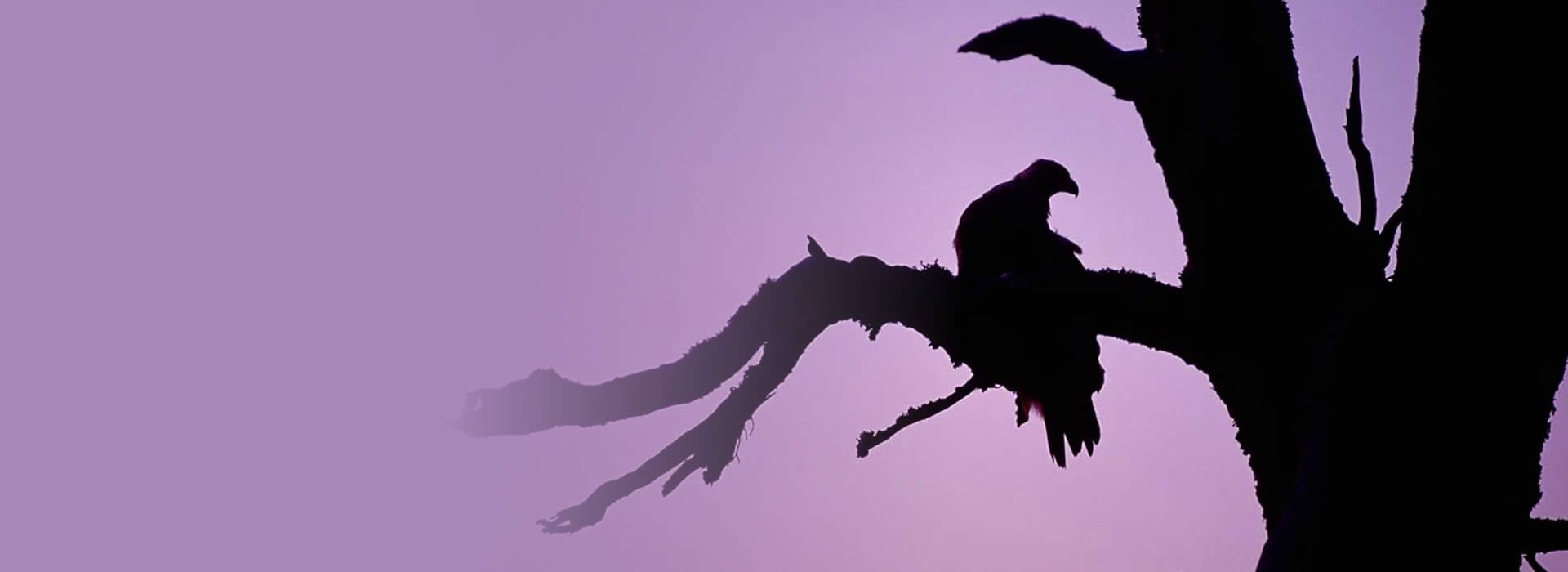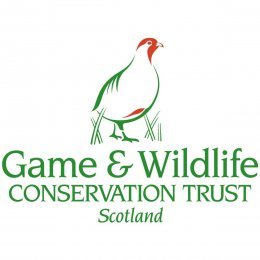BLOG
Restoring
Upland Nature
home to the south of scotland
golden eagle project

Seton Gordon, and Cain and Abel.
In this week's Eagle People Profile #9 Project Board member Des Thompson urges us to read the works of Seton Gordon.
“For the first 30 years of this century [20th], after the great work of Harvie-Brown and his companions, Seton Gordon was the only ornithologist working full time in the Scottish Highlands” This opening line of the Foreword to the reprint (in 1980) of Seton’s classic book The Golden Eagle. King of Birds, first published in 1955, gives a sense of the importance of his work.
PLEASE BE AWARE THAT SOME READERS MAY FIND SOME OF THE IMAGES BELOW DISTRESSING.
Seton Gordon (1886-1977) was an exceptional naturalist and photographer, publishing 27 books including two specifically on golden eagles (the other being Days with the Golden Eagle, 1927). An excellent anthology of his work was published in 2007 https://www.whittlespublishing.com/Seton_Gordons_Scotland, and an entertaining account of his life is given in Raymond Eagle’s Seton Gordon. The Life and Times of a Highland Gentleman (1991). Working almost solely in the Highlands and Islands, Seton influenced some of our finest naturalists including Adam Watson, Desmond Nethersole-Thompson, Jeff Watson, Mike Tomkies and Jim Crumley.
Uniquely talented, he was an accomplished piper and judge at the Highland Games and many piping competitions, and a pioneering wildlife photographer and lecturer. Some excellent information on him is given here: https://scotlandsnature.blog/2014/04/17/seton-gordon/
Having a privileged upbringing, he counted many members of the royal family as friends. He once told the author and broadcaster Tom Weir: “I went to Russia in 1912 with Prince Felix Yusupov. He was with me at Oxford; he owned 32 properties and wanted me to be one of his foresters. He was the Prince who killed Rasputin and married the niece of Tsar Nicholas II, and if I had taken the job I might have died in the Revolution!”
Cain and Abel
Our Project relies on us being able to take one of two chicks from golden eagle nests in stronghold Highland populations. We carefully select the strongest and healthiest chick (a vet carries out the examination) and then carefully take it south for rearing and final release, in an endeavour to boost the small southern population. What is not widely appreciated is that very often in golden eagle eyries the older eaglet will kill its younger brother or sister (often a younger brother), in what is referred to as ‘Cainism’. This term is based on the Old Testament story of fratricide between Cain and Abel.

The Greek polymath (and first systematic zoologist) Aristotle (born 384 BC) was evidently the first to record this phenomenon in birds. Siblicide or Cainism has long intrigued ecologists and evolutionary biologists. Some of the larger eagle species such as lesser spotted eagles, tawny eagles and Verreaux’s eagles often lay two eggs but rarely rear two young, because of Cainism. Other eagles, including golden eagles, lay two eggs, and in some regions fairly regularly rear two young (though the incidence of both fledging does appear to be declining over recent decades). The former are called ‘obligate Cainists’ and the latter, including golden eagles, facultative Cainists!
Whilst food supplies appear to be the driver of this, with food shortage and the risk of starvation evidently driving much of the sibling aggression, some recent studies have shown the explanation is far from straightforward. Typically, death occurs in the first few weeks of life, yet a youngster may have been killed by its sibling even when ample food is on the eyrie.
Often the aggression and fighting appears related to exerting dominance rather than killing the smaller sibling.

Doug Mock, Barbara Braun and the Oxford English Dictionary!
I first encountered this field of science when working with US visiting colleague Doug Mock at Liverpool University in the mid-1980s – we published a critical review of the ‘information centre hypothesis’ which argued that birds joined colonies or roosts to improve their foraging efficiency through exchanging information on the location of food (1988). Doug was intrigued by parental conflict, and with the legendary evolutionary biologist Geoff Parker published The Evolution of Sibling Rivalry (1997), and later on his own a classic text More Than Kin and Less Than Kind: The Evolution of Family Conflict (2004). Doug maintained that Barbara Braun and George Hunt’s research on siblicide in black-legged kittiwakes was one of the earliest and most definitive studies, based in part on Braun’s University of California Master’s thesis (1981), Braun was the first to coin the term ‘siblicide’ in her thesis, but evidently when she published her research in the journal The Auk, the editor forbade the use of the term! It was not until Doug published a key paper in the prestigious journal Science in 1984, on ‘Siblicidal aggression and resource monopolization in birds’, that the term ‘siblicide’ was formally recognised. As Doug has just reminded me by email: ‘Etymologically, I am pleased to have brought the word into current usage and was delighted when it went into the Oxford English Dictionary on the same day that “scuzzy” and “grunge” were admitted to that hallowed temple!”
Seton Gordon’s gruesome observations
But, and this is key, I suggest that if we go back almost one hundred years we arrive at one of the earliest and most detailed descriptions of Cainism – by Seton Gordon!
In Chapter IX (A Tree Eyrie) in The Golden Eagle. King of Birds, Seton and his first wife, Audrey, detail observations of the gruesome interactions between two eaglets in an eyrie (eight feet wide and more than six feet deep) covering the whole crown of a Scots pine. These observations were made in 1925 over three months and published in Days with the Golden eagle (1927, which quickly went out of print). In his later book he gives a more vivid account, reiterating and expanding on earlier observations. Watching the occupants in the eyrie from a hide uphill some 30 feet away, Seton and his wife spent 31 days (amounting to 167 hours) on watch).
‘On 13 May, the day on which I took the first watch in the hide, the larger eaglet, then approximately twelve days old, felled the smaller with two or three well-aimed blows, and on two other occasions that day made deliberate attacks. Two days later, the larger eaglet mercilessly attacked the smaller, several times driving it to the edge of the nest and, when the victim seemed about to fall to the ground, seizing it and throwing it back into the nesting cup…’ He went on to describe the two as ‘Cain and Abel’, though was sure the aggressor eagle was the earlier born sister. The descriptions went on. ‘On 2 June… the eagles were by now between four and five weeks old… on this day the bully made the most determined attack on the smaller eaglet I had yet seen. The mother was standing on the eyrie at the beginning of this unprovoked aggression, but she did not intervene on the side of the attacked, and almost at once took wing. With wild cries the young female pursued her brother round the eyrie, aiming blow upon blow on head, neck and body.’
Learning from the past
I will stop at that, but you must read the book to discover the ending – which is gripping and utterly unexpected! Fascinatingly, the description of the parent not intervening is now widely reported in golden eagles, and that in itself tells us something of the evolutionary significance of this deadly behaviour.
For our project involving the translocation of one of a pair of eaglets for rearing and then release, we can console ourselves that in some cases at least we may be saving one of the youngsters a dreadful demise.
As for Seton, here he is aged 90 on Carn an Tuirc in the Cairngorms in August 1976, typically attired, and captured wonderfully by Adam Watson.
https://scotlandsnature.files.wordpress.com/2014/04/seton-by-adam-watson.jpg
A memorial stone dedicated to him is close to Kilmuir Cemetery at the north tip of the Trotternish Peninsula on the Isle of Skye, where Seton spent much of his later life. I should add I met Seton once, and as a young schoolboy enjoyed postcards sent to my family home with his latest, unusual sightings. My father wrote the Foreword which I quote at the beginning, and with Adam Watson dedicated their book The Cairngorms. Their Natural History and Scenery’ (1974) as follows: ‘For Seton Gordon, who lit a spark in us both, and Adam Watson, father of one and friend of both.’

Thank you. I am indebted to Professor Doug Mock, George Lynn Cross Research Professor of Biology at the University of Oklahoma, who I last worked with 35 years ago, and who days ago provided me with key information on the origins and nature of siblicide. I also thank Pete Moore for comments, and Neil Anderson and Laurie Campbell for their vivid images.
Photos
https://scotlandsnature.files.wordpress.com/2014/04/seton-by-adam-watson.jpg : Seton Gordon, aged 90, on Carn an Tuirc in the Cairngorms in August 1976. Adam Watson
This young golden eagle was persistently attacked by its sibling in an eyrie in Lochaber. Later, the large eaglet is about 50 days old, and the partially concealed smaller eaglet had died a few days earlier having endured weeks of attacks. Most of the aggression started when an adult arrived with prey, with the larger eaglet pecking its sibling on the same area of its shoulder. Laurie Campbell
Adult golden eagle in flight. Neil Anderson















